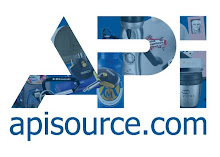In 2008, when considering the direction for the future of API, management began contemplating some big changes. In turn, some great improvements began! In the warm summer month of August, Cindy Brown was appointed the President and CEO making her the first female to run the company in its 43 year history.
Before Cindy was offered the position, API was in search of someone to join the team and provide strength and leadership as well as management. In growing the company, having such people is a necessity and API knows that. “We were looking for outside input and advice because we had hit a ceiling and were having difficulty breaking through the $10 million revenue mark” per year, Cindy recalls. In the mean time, she was already facilitating the leadership role of the company. From the finances to production, in her eighteen years with the company; she has pretty much done it all. In addition to this expansion, API determined the future goal of becoming a woman owned business. When you already have a woman at the wheel, why not? And when you already have one as acting President, why not make her President? So it all fell into place.
After the initial panic of assuming such responsibility, Brown’s reaction to the decision was one of absolute excitement and re-motivation. Since then API has been enjoying wonderful benefits. Once the position was official, Brown stepped into more of a sales leadership role, providing training, resources, and even bringing speakers in to address the sales team. She started daily meetings with the customer service staff that included training, role playing and other exercises. The results were overwhelming. In 2008 API was hitting a wall at $10 million in sales per year. In 2011, we exceeded $20 million dollars in combined division sales! That is an amazing impact and one that is hard to dispute. Cindy also likes to think that she helps bridge the gap between API “the company” and API “the people”. She feels like the culture here is one of the most important things we have.
With such a high mark already obtained, what is next for the President of API? She has big plans and a new set of goals for 2012. They include enhancing the efficiencies of each department through more targeted training, adding more activities such as contests, employee of the month recognition, company lunches and more events that will promote a happy work place. Cindy notes that it’s because of the staff here that “in a down economy where people are scared, we’ve experienced a 40% growth.” So the next goals for API are “to regroup, keep our eyes open for opportunities and partnerships, consider a new home to fit our ever expanding API family, continue to grow the culture within API, and determine how to hit the $25 million mark if that’s where we decide we want to be.” From the sounds of it, she’s got a busy year.
Someone with a list of such great successes could be arrogant, assuming or smug. But of her position Cindy says her absolute favorite thing is “being granted the opportunity to positively affect 120 people’s lives.” That’s the kind of remark a true leader should make.
There you have it. Big changes bring big results for us here at API. We refuse to be afraid of the downturned world around us. We refuse to give up. We stand strong behind a leader that encourages us to do so and we see great success for doing it. And that is why Cindy Brown wears the pants in this family.











